The wind howled from the West and snow fell sideways, which made trout fishing rather pointless. It was the kind of spring weather that you just can’t fish through; you have to wait it out. So I stayed home for the better part of a week, tying flies and filling boxes full of patterns I’ll need when summer rolls around. I kept looking out the window, hoping for a break in the weather and warm enough temps to coax a blue-wing hatch into existence.
Early spring blue-wing hatches are among my favorite in fly fishing, but they’re also the most infuriating. The bugs are tiny, the water is usually still low, and the fish are more skittish than normal. On my local tailwaters especially, the trout are professional fly critics, carefully examining each bug for the correct number of tail feathers and a properly tapered body. If so much as half a hackle fiber is out of place, they shake their heads, seeming almost disappointed that I still don’t understand exactly what they want.
So, once all the necessary flies are tied, I try to dream up an answer to those infuriating days of fishing. I’ve used variations on the Last Chance Cripple, Sparkle Duns, comparaduns, and Klinkhammers for years, to varying degrees of success. This year, I want something that’s closer to a sure thing. Specifically, I need an emerger that floats right in the surface film, but isn’t impossible to see in the cloudy, flat light of a good hatch. And I don’t want it to take ten minutes to tie.
Slowly, over a few more days spent waiting out the weather, I come up with something that looks like it should work. The early returns are promising — it catches fish on the tailwaters that always give me grief this time of year.
I’ve come up with a few other flies in the past that have worked, but I always assumed those were lucky guesses. I’m no fly tying savant; my flies work for the trout and places where I fish, which is all I can realistically ask. What makes this blue-wing emerger pattern different, though, is that I tied it to fit a specific need. The other flies I’ve created all happened probably by accident.
With that in mind, I wanted to share my process for creating this new-to-me pattern. It just might help you crack the code to tying your own killer fly that works wonders on your local waters.
Identify the need
What made this blue-wing emerger pattern so successful for me was that I knew exactly what kind of fly I wanted. I needed something that would float right in the surface film, yet still be fairly visible. I wanted something easy to tie. Above all, it needed to work on picky fish. Since I clearly knew what I needed, it made wading through the mess on my fly tying desk much easier. Standard dry fly hooks were out of the question since I wanted something to sit right in the surface film. Even something as simple as how you want your fly to float can help you eliminate tons of different options in the design process.
Make it stand out
Once you’ve decided what your new fly has to have, you need to find some way to make it stand out from the other options out there. Why is Egan’s Frenchie such a great variation on the standard Pheasant Tail nymph? Because it has the bright red hotspot that a Pheasant Tail doesn’t. That little detail makes the fly stand out, both to other anglers and probably to fish, too.
For the blue-wing emerger pattern, I knew I had to make it different than the usual goose or turkey biot bodies. Dubbing might work, but fish see a lot of dubbed bodies on emergers, too.
I finally settled on stripped peacock herl. The color variations and slight riding make it an ideal material for an emerging mayfly body, and I don’t see as many flies tied with it as I do with biot. I can’t say for certain that using peacock herl instead of goose biot is why the fish love the emerger so much, but I reckon it has something to do with it.
What does the fish see?
Parachute flies are popular for a number of reasons — they float well, they’re easy to see, they’re simple to tie — but what makes them so effective is the silhouette they create from a fish’s point of view.
Looking up, a fish sees a sparse tail and a thinly tapered body resting right on the water’s surface. Used in the right size as anything else on the water, that silhouette looks like anything from a midge to a caddis.
I’ve found that visualizing my flies from this point of view helps me tie the classic patterns more effectively, in addition to helping me create my own patterns. If you build your fly around what the fish will see when it floats by, I think you’re far likelier to create something successful than not.
Get the colors right
If you’re like me and fish heavily pressured water, color does matter. Size and shape are more important in fly design, but you need the right color scheme, too. I’ve actually started mixing a few different types of dubbing together to create the right shade of dark olive for the early-season blue wings around here. I’m sure the mayflies and caddis in your neck of the woods all have a unique color scheme to them, so pay attention and try to craft a color palette that matches.
While it’s important that your fly stands out (like the Frenchie) you don’t want it so flashy the fish ignore it. The Frenchie’s red hot spot is a small part of the fly overall, and as I mentioned earlier, we don’t know if that’s why trout love it so much. The rest of the fly stays within traditional color schemes, though, which I think is part of the Frenchie’s success.
Creating your own flies is fun. It’s a challenge to come up with something new, or a unique spin on classic patterns, but the payoff can be more fish in the net. Do yourself a favor, though, and don’t wait to start experimenting until you get stuck inside for a week due to bad weather. Create something now, so you’re prepared the next time you hit the water.




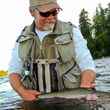
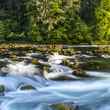
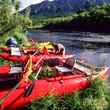

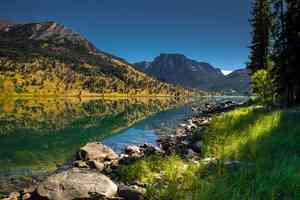


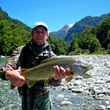














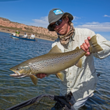


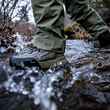


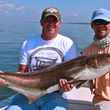
Comments